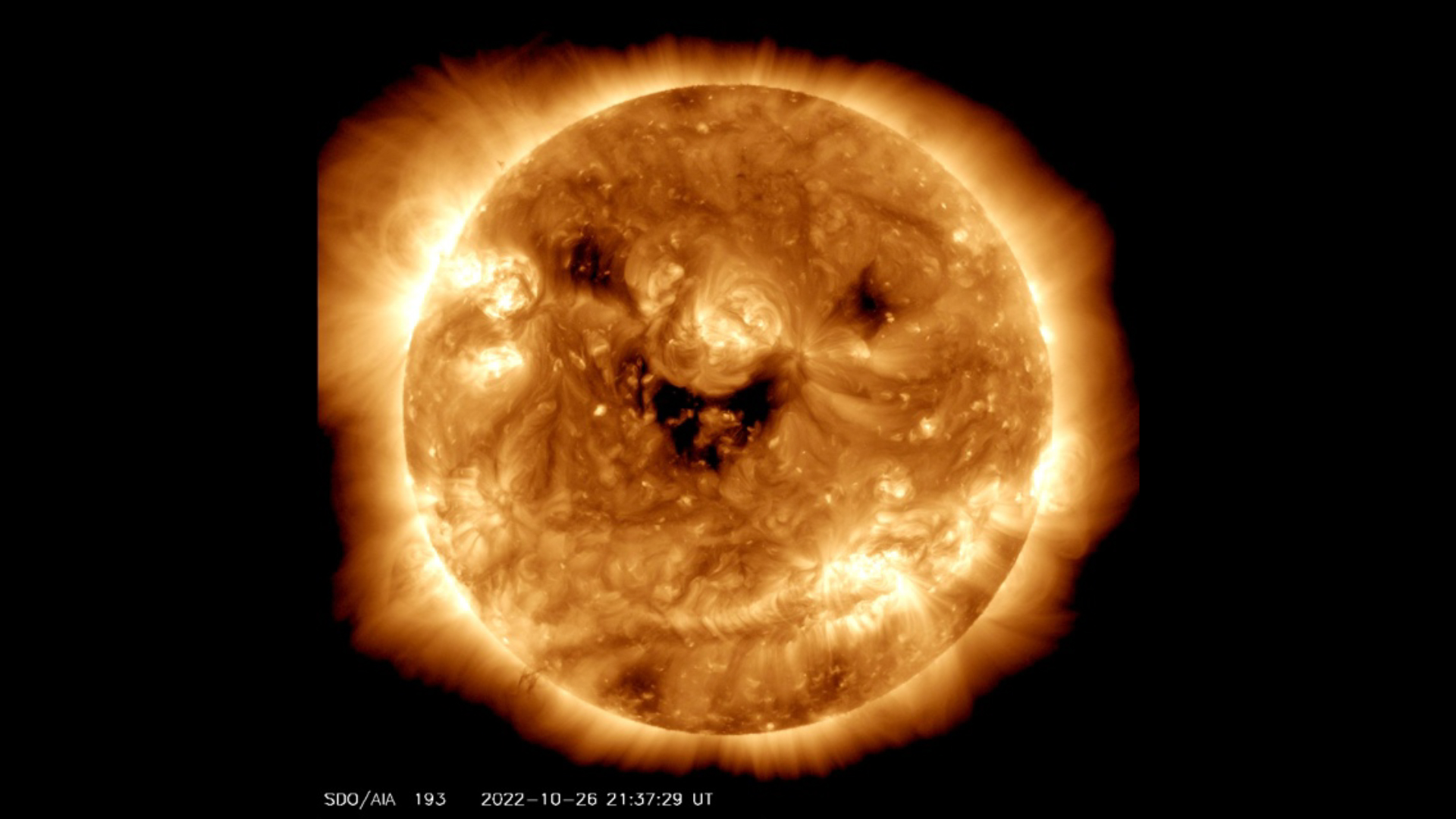The sun, the biggest entity in our solar system, is “smiling”. The image, taken by NASA’s space-based Solar Dynamics Observatory, was shared on social media, causing different outbursts from viewers.
Released on Twitter, the post said: “Today, Nasa’s Solar Dynamics Observatory caught the sun ‘smiling.’ Seen in ultraviolet light, these dark patches on the sun are known as coronal holes, regions where fast solar wind gushes out into space.” They hold little solar material thus having lower temperatures and appearing shadier than their surroundings.
While it can be viewed as a coincidence, days after the phenomenal “smiling sun,” the National Oceanic and Atmospheric Administration’s Space Weather Prediction Center issued a minor geomagnetic storm watch. Geomagnetic storms can produce gorgeous dawning in the sky, but they can also disturb GPS and generate destructive streams in the power grid and pipelines.
NASA


NASA or the National Aeronautics and Space Administration is America’s civil space program and the global leader in space exploration. NASA and other international space agencies strictly monitor the Sun 24/7 with an armada of spacecraft, poring over everything from its atmosphere to its surface, and even probing inside it using superior gadgets. These spacecraft include Parker Solar Probe, Solar Orbiter, SOHO, ACE, IRIS, WIND, Hinode, Solar Dynamics Observatory, and STEREO.
The Sun
Our Sun is a 4.5-billion-year-old star – a scorching radiant ball of hydrogen and helium in the middle of our solar system. It is approximately 93 million miles (150 million kilometres) from Earth. Without its energy, life could not exist on this planet.


Its volume would need 1.3 million planet Earths to fill it. Its gravity keeps the solar system intact. At the core is the hottest part, with temperatures topping 27 million degrees Fahrenheit (15 million degrees Celsius). The sun’s activity, from its powerful flare-ups to the solid torrent of electric particles it sends out, impacts the nature of space all over the solar system.
Read More News:
Itaewon Crush: A Mixture of Disregard, Panic, and Indifference
The post The sun is “smiling” – NASA appeared first on The Independent World News.

